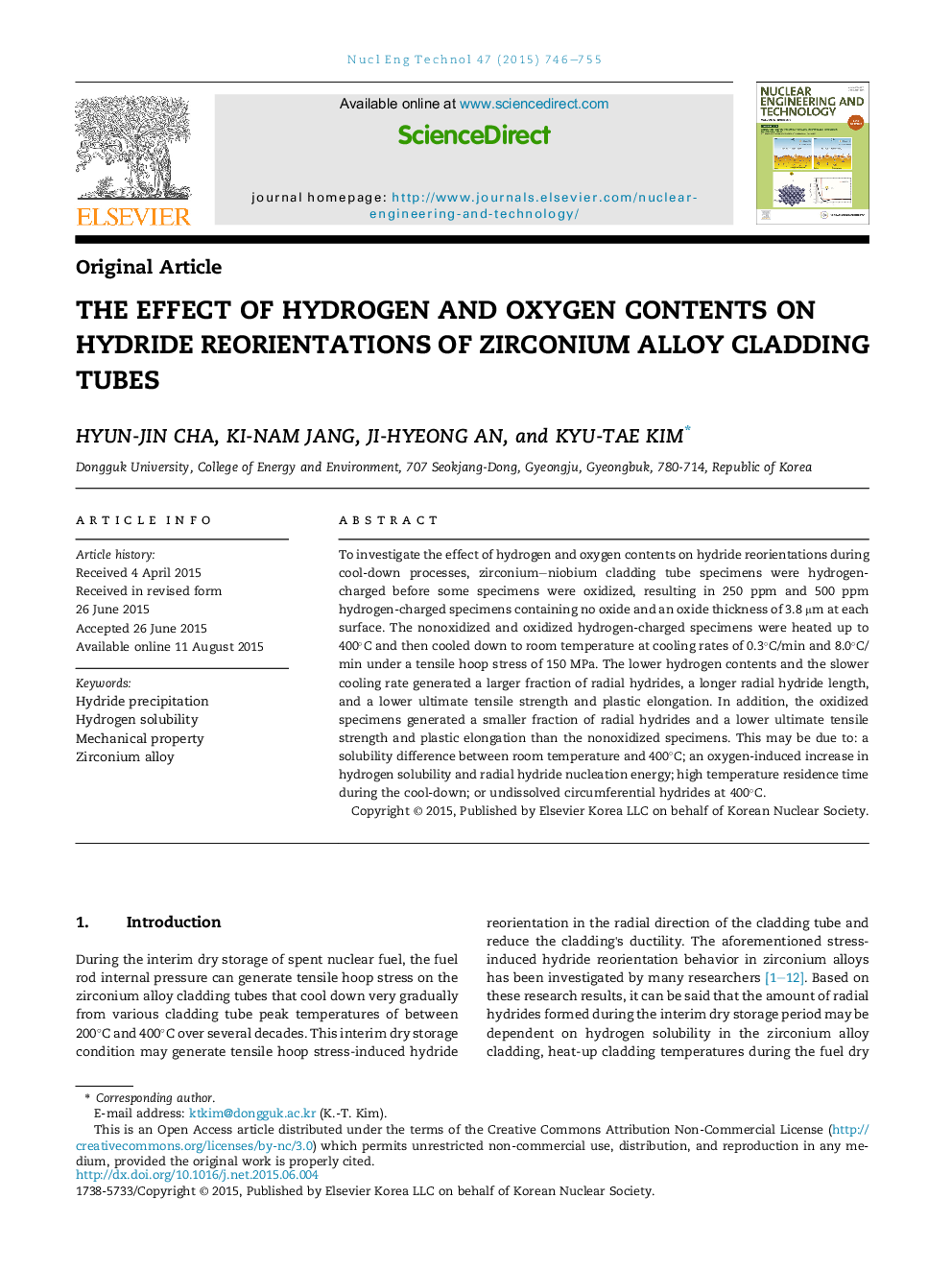| کد مقاله | کد نشریه | سال انتشار | مقاله انگلیسی | نسخه تمام متن |
|---|---|---|---|---|
| 1740119 | 1017324 | 2015 | 10 صفحه PDF | دانلود رایگان |
To investigate the effect of hydrogen and oxygen contents on hydride reorientations during cool-down processes, zirconium–niobium cladding tube specimens were hydrogen-charged before some specimens were oxidized, resulting in 250 ppm and 500 ppm hydrogen-charged specimens containing no oxide and an oxide thickness of 3.8 μm at each surface. The nonoxidized and oxidized hydrogen-charged specimens were heated up to 400°C and then cooled down to room temperature at cooling rates of 0.3°C/min and 8.0°C/min under a tensile hoop stress of 150 MPa. The lower hydrogen contents and the slower cooling rate generated a larger fraction of radial hydrides, a longer radial hydride length, and a lower ultimate tensile strength and plastic elongation. In addition, the oxidized specimens generated a smaller fraction of radial hydrides and a lower ultimate tensile strength and plastic elongation than the nonoxidized specimens. This may be due to: a solubility difference between room temperature and 400°C; an oxygen-induced increase in hydrogen solubility and radial hydride nucleation energy; high temperature residence time during the cool-down; or undissolved circumferential hydrides at 400°C.
Journal: Nuclear Engineering and Technology - Volume 47, Issue 6, October 2015, Pages 746–755
